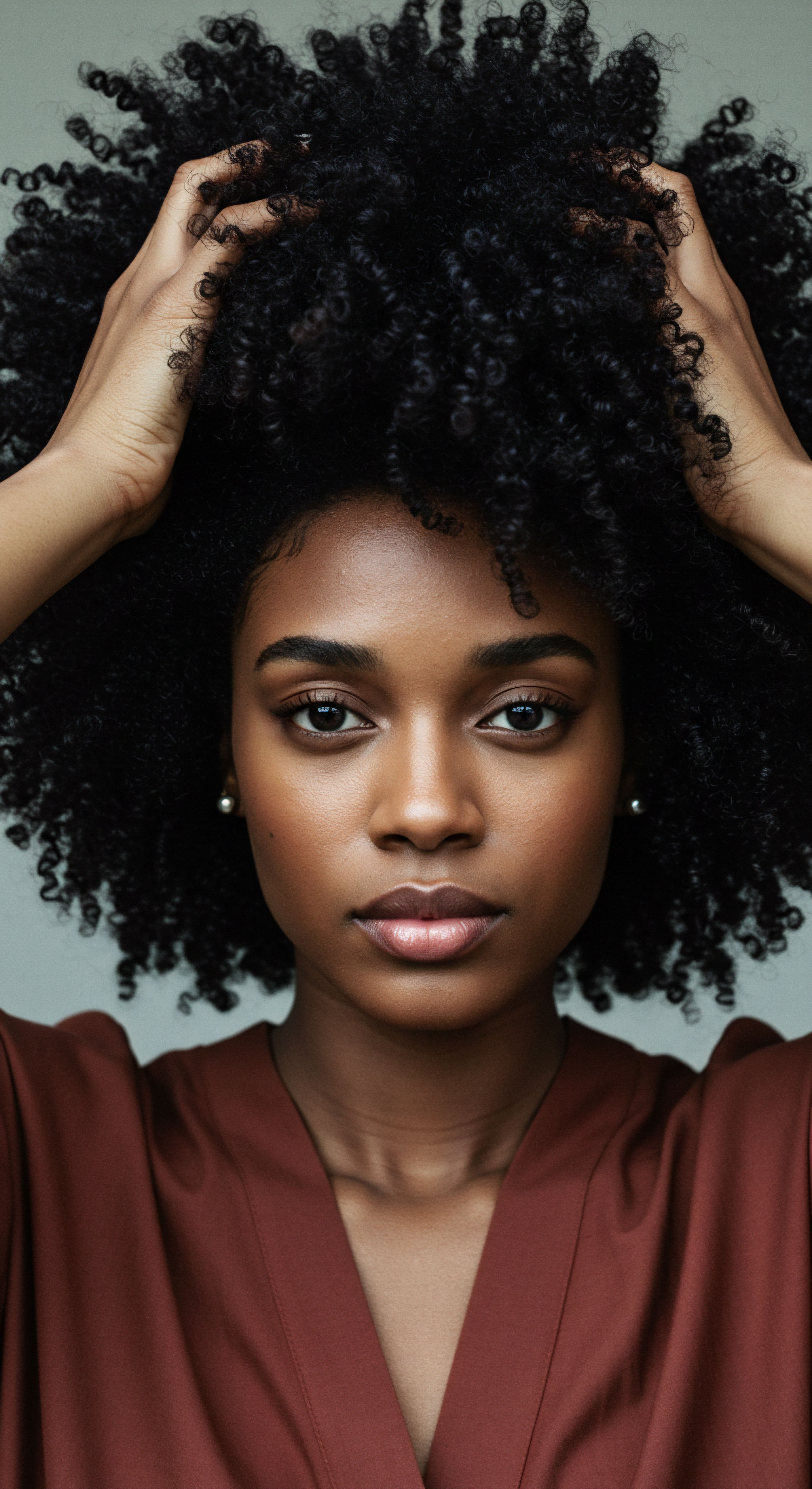
Roots
The delicate dance of hair, its very presence upon our heads, often holds far more than simple strands. It is a chronicle, a living archive of heritage, personal stories, and the subtle currents of societal expectations. For those with textured hair, this connection runs particularly deep, often reaching back through generations, a silent echo of ancestral styling practices and cultural expressions. Before we can truly consider the fiscal contours of hair straightening, we must first settle into a calm appreciation of textured hair’s innate design, its unique biology, and the historical forces that have shaped its perception and treatment.
At its most fundamental level, textured hair possesses a distinct anatomical structure that sets it apart. Unlike straight hair, which tends to have a round cross-section, curly and coily strands present an elliptical or even flat shape when viewed microscopically. This unique architecture causes the hair shaft to bend and twist as it grows, giving rise to its beautiful, varied curl patterns.
The outer layer, the Cuticle, composed of overlapping scales, is often more raised in textured hair, which can contribute to its natural tendency to appear less smooth and to require more moisture to maintain its health. The inner cortex, responsible for strength and elasticity, is also configured differently, influencing how the hair responds to external forces, including chemical alterations and heat.
The classifications of textured hair, from loose waves to tight coils, offer a language to appreciate this diversity, yet no single system fully captures the individual character of each person’s hair. Understanding one’s specific curl pattern, density, and porosity is not merely a matter of scientific curiosity; it forms the very foundation of effective, gentle hair care. When hair is straightened, whether through chemical means or intense heat, these inherent structural properties are fundamentally altered.
Chemical relaxers, for instance, work by breaking the hair’s disulfide bonds, reforming them into a straightened configuration. This process, while offering a desired aesthetic, inherently compromises the hair’s natural strength and elasticity, making it more vulnerable to damage.
The history of hair practices among people of African descent is rich with meaning, often reflecting periods of both cultural celebration and societal pressure. Prior to the transatlantic slave trade, West African communities styled hair in elaborate ways that conveyed social status, age, marital standing, and ethnic identity. The act of hair styling was communal, a moment of connection and storytelling.
However, with the onset of slavery, these practices were disrupted, and later, during periods of assimilation, straightened hair became a symbol of conformity to Eurocentric beauty standards. This historical context is not a distant whisper; it continues to influence perceptions and choices today, often creating an unspoken expectation that carries a significant, though often unseen, financial weight.
The journey of understanding one’s hair, particularly textured hair, is a personal one, yet it unfolds against a backdrop of collective history and prevailing beauty ideals. The desire for straight hair, whether born of personal preference or external influence, often sets in motion a cycle of care that carries economic implications from its very inception. This initial step, often taken without a full grasp of the cumulative expenses, begins a long commitment to specific products, tools, and professional services.
Understanding textured hair’s natural design and its historical context is essential before assessing the economic aspects of straightening.
This historical preference for straight hair, deeply rooted in societal norms, often shapes the very perception of what is considered “professional” or “well-groomed” in various environments. This subtle, yet pervasive, influence can guide individual choices, leading many to seek straightening as a means of social or economic mobility. The initial chemical treatment or the purchase of a high-quality flat iron represents more than a singular transaction; it marks the entry into a particular care regimen, one that frequently demands recurring investment.
The cost of a single relaxer application, for example, might seem manageable in isolation, but when viewed as a recurring need, it begins to paint a picture of a continuous financial outflow. This foundational shift in hair structure necessitates ongoing maintenance, specialized products, and sometimes, corrective measures, each adding to the cumulative expenditure.
The very lexicon we use to describe textured hair and its care often mirrors these underlying historical and societal currents. Terms like “good hair,” once used to denote straighter textures, hint at a past where hair type was unfortunately tied to social acceptance. As we consider the financial aspects, it becomes apparent that these historical echoes are not merely abstract concepts; they translate into tangible spending patterns.
The pursuit of a particular aesthetic, influenced by these deep-seated ideals, necessitates specific product purchases and salon visits. This financial commitment is not simply about appearance; it is, for many, an investment in navigating societal landscapes that have historically favored a particular hair presentation.
- Hair Anatomy ❉ Textured hair possesses an elliptical cross-section, which causes its natural curl pattern.
- Cuticle Layer ❉ The cuticle of textured hair tends to be more raised, influencing its moisture retention and smoothness.
- Historical Context ❉ Societal preferences for straight hair have deep historical roots, affecting modern hair choices.

Ritual
The conscious act of altering hair texture, whether through the precision of heat tools or the chemical transformation of a relaxer, represents a deliberate choice, often undertaken with a vision of ease or a specific aesthetic in mind. This section turns its attention to the methods themselves, the tools that aid in these transformations, and the initial financial steps taken when one decides to embark upon a hair straightening regimen. This is where the theoretical understanding of hair’s structure meets the practical application of styling, and where the first layers of financial commitment begin to settle upon the individual.
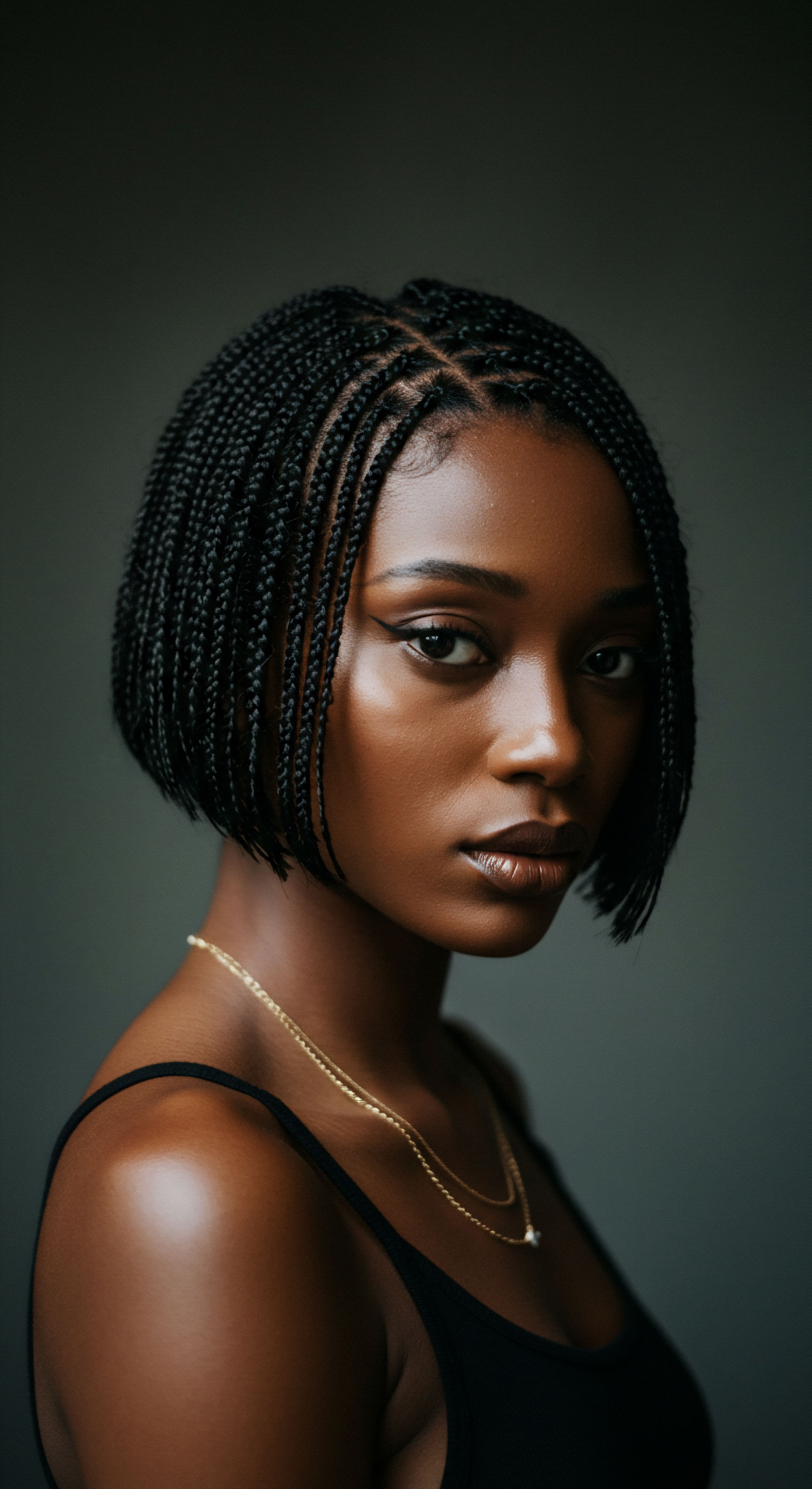
What Are the Common Paths to Straightened Hair?
The landscape of hair straightening offers several distinct paths, each with its own set of requirements and associated costs. The most enduring of these, chemical relaxers, involve strong alkaline agents that permanently change the hair’s natural curl pattern. These treatments typically require professional application due to the potency of the chemicals involved, ensuring proper technique and minimizing scalp irritation. A single salon visit for a relaxer can range significantly in price, dependent on location, salon prestige, and hair length.
Another popular method, keratin treatments, often called Brazilian blowouts, are semi-permanent options that smooth the hair by infusing it with a protein solution, then sealing it with heat. While they do not permanently alter the hair’s internal structure like relaxers, they still involve a chemical process and high heat. The results can last for several months, but the initial outlay for such a treatment is often considerably higher than a relaxer, sometimes reaching into the hundreds of dollars for a single session. Regular touch-ups are necessary to maintain the effect as new growth appears.
Thermal reconditioning, or Japanese straightening, represents a more permanent heat-based method that uses a chemical solution to break hair bonds, followed by intense heat to restructure the hair into a straight form. This method is known for creating extremely straight results, but it is also one of the most time-consuming and expensive salon services. The hair remains straight until it grows out, meaning only the new growth requires re-treatment.
Beyond chemical interventions, heat styling with tools like flat irons and hot combs remains a common practice. While seemingly less impactful than chemical processes, consistent high-heat application can lead to significant damage over time. The initial purchase of quality heat tools can represent a notable expense, with professional-grade flat irons often costing upwards of a hundred dollars. This is a foundational cost, but it quickly accumulates with the addition of heat protectants, specialized styling products, and electricity usage.
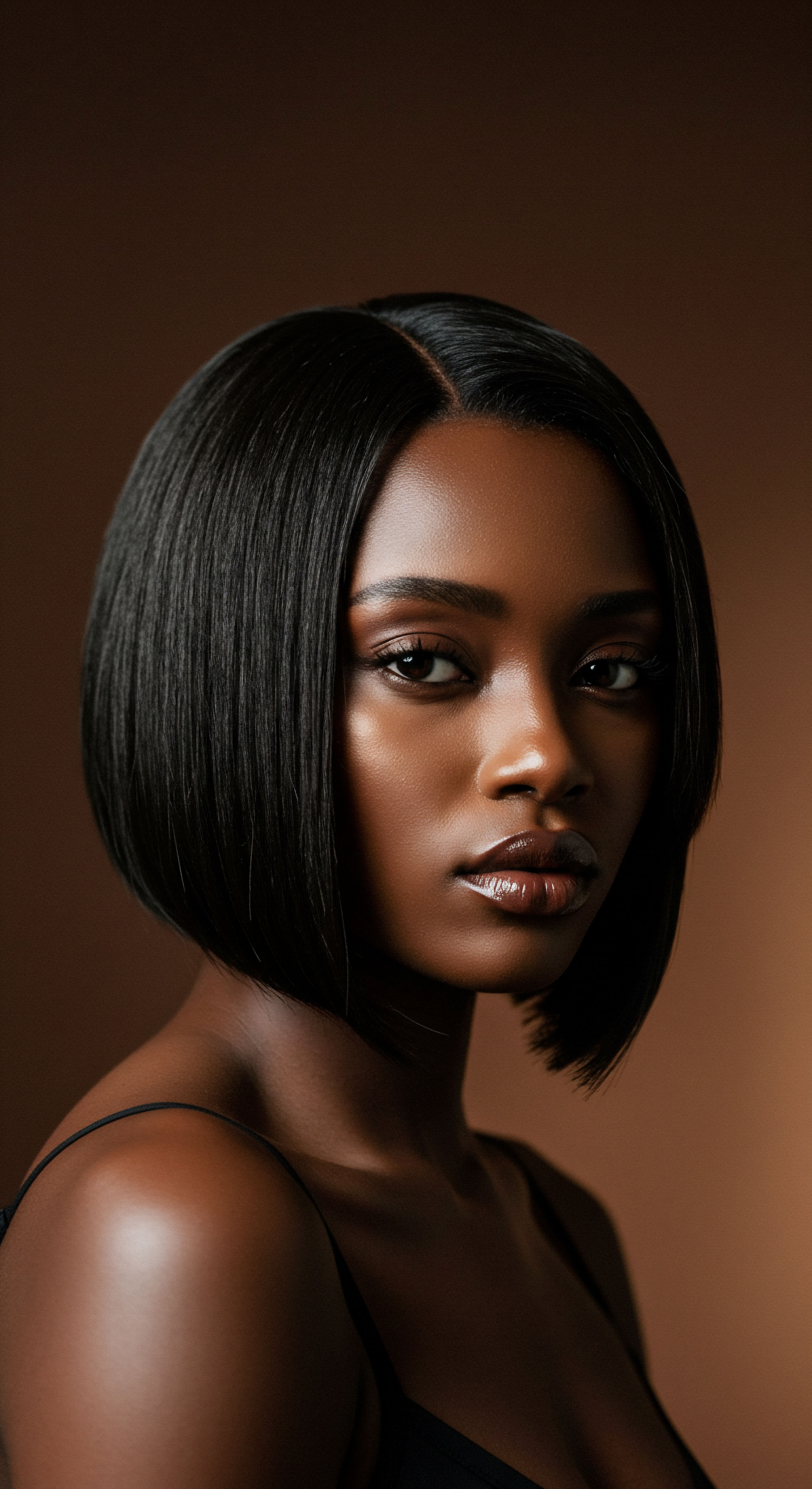
What Are the Initial Financial Outlays for Straightening?
The financial commitment to hair straightening begins immediately with the choice of method. For salon-based chemical services, the cost is substantial. A relaxer application might cost anywhere from $60 to $200, depending on the salon and the stylist’s experience. Keratin treatments, offering a different kind of smoothness, can demand $200 to $500 or More per session.
Japanese thermal straightening often sits at the higher end, potentially costing $300 to $800 or Even Higher for the initial application, given its complexity and duration. These figures represent the baseline entry into a straightened hair regimen.
For those opting for at-home chemical straightening, the product cost is lower, typically between $10 and $30 for a relaxer kit. However, this saving often comes with increased risks of improper application, leading to burns or damage that may later necessitate costly professional repair. Similarly, while a flat iron purchase is a one-time expense, the reliance on heat styling brings its own continuous spending.
| Method Chemical Relaxer |
| Process Permanent alteration of hair bonds with alkaline agents. |
| Typical Initial Cost Range $60 – $200 (Salon) / $10 – $30 (At-Home Kit) |
| Method Keratin Treatment |
| Process Semi-permanent smoothing with protein and heat. |
| Typical Initial Cost Range $200 – $500+ (Salon) |
| Method Japanese Thermal Reconditioning |
| Process Permanent restructuring of hair bonds with chemicals and intense heat. |
| Typical Initial Cost Range $300 – $800+ (Salon) |
| Method Heat Styling (Flat Iron) |
| Process Temporary smoothing using direct heat. |
| Typical Initial Cost Range $50 – $200+ (Tool Purchase) |
| Method Costs vary by location, stylist, and product brand. |
Beyond the initial service or tool, the adoption of straightened hair often compels the purchase of a new suite of hair care products. Shampoos and conditioners specifically formulated for chemically treated or heat-styled hair, heat protectants, serums for shine, and deep conditioning treatments become regular additions to the shopping list. These products, often positioned as essential for maintaining the health and appearance of altered hair, carry their own recurring costs, quietly adding to the financial commitment. The cumulative effect of these seemingly small purchases can become quite substantial over months and years.
Hair straightening involves a spectrum of methods, each requiring a distinct initial financial commitment.
The journey into straightened hair is rarely a single transaction; it is a commitment to a particular aesthetic that demands consistent attention and investment. The desire for a smooth, sleek appearance, often reinforced by pervasive beauty ideals, translates directly into a predictable pattern of spending. This spending is not limited to the treatment itself, but extends to the tools that facilitate it and the specialized products that protect and preserve the altered hair structure. Each purchase, from the initial salon visit to the weekly conditioning mask, contributes to a financial rhythm, a ritual of maintenance that shapes one’s budget over time.
- Salon Services ❉ Professional straightening treatments represent a significant upfront cost.
- At-Home Kits ❉ While cheaper, at-home chemical applications carry higher risks of damage, potentially leading to future repair costs.
- Product Acquisition ❉ New hair care products tailored for straightened hair quickly become regular expenditures.
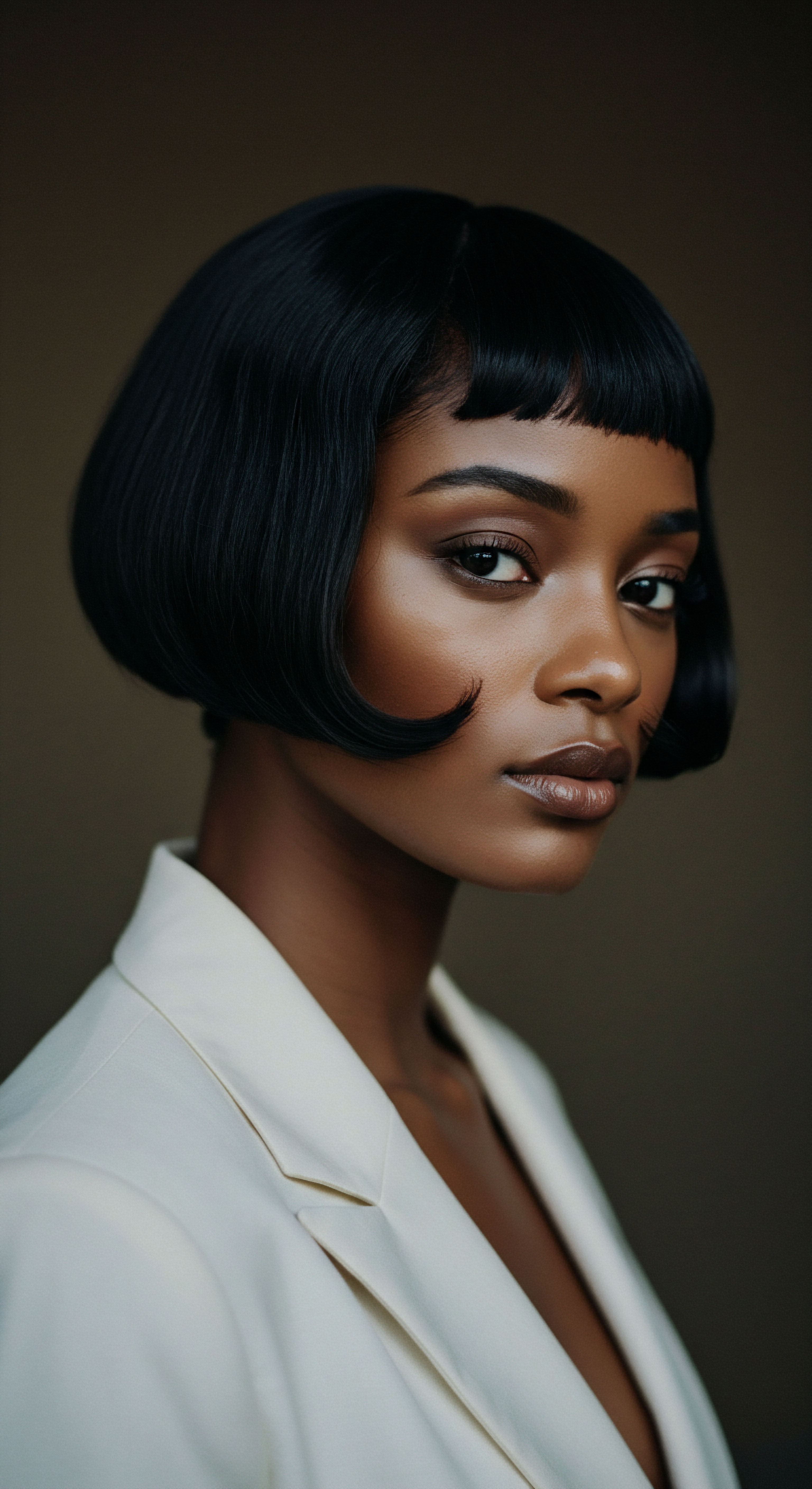
Relay
To truly comprehend the financial burden of hair straightening, one must look beyond the initial price tag of a salon visit or a product kit. The real economic impact unfolds over time, a continuous stream of expenses that extend far beyond cosmetic considerations, touching upon health, time, and even career progression. This section will delve into the complex, interconnected layers of these costs, painting a comprehensive picture of the fiscal commitment required to maintain straightened hair, particularly for individuals with textured hair who often face unique societal pressures.

How Do Ongoing Maintenance and Repair Add Up?
The very nature of hair growth means that chemical straightening, if desired permanently, requires consistent touch-ups. As new, natural hair grows from the scalp, it creates a visible line of demarcation, necessitating regular reapplication of relaxers or other chemical agents to the new growth. These salon visits typically occur every 6 to 8 weeks, with each session carrying a cost similar to the initial application.
Over a year, this translates to 6 to 9 appointments, rapidly accumulating into hundreds, if not thousands, of dollars annually. For those who opt for keratin treatments or Japanese thermal reconditioning, while less frequent, the per-session cost is often higher, creating a comparable yearly expense.
Beyond the chemical treatments themselves, maintaining the health and appearance of straightened hair demands a specific regimen of products. Chemically altered hair is inherently more vulnerable to dryness, breakage, and damage. This vulnerability necessitates the regular use of specialized shampoos, conditioners, deep conditioning treatments, protein treatments, and leave-in products designed to restore moisture and strength. Heat protectants are also a constant need for those who use flat irons or blow dryers to maintain smoothness between washes.
These products, often priced higher than general hair care items, represent a significant, recurring line item in a personal budget. A monthly expenditure of $30 to $100 on these specialized products is not uncommon, totaling $360 to $1200 or more annually.
Moreover, the potential for damage is a constant companion to straightening practices. Chemical burns from relaxers, breakage from excessive heat, and general weakening of the hair shaft can lead to costly corrective measures. This might include professional salon treatments for damaged hair, such as Olaplex or bond-repairing services, which can range from $50 to $150 Per Session.
In more severe cases, individuals may need to invest in therapeutic scalp treatments or even seek dermatological consultation for scalp irritation, hair loss, or other adverse reactions. These unforeseen costs add an unpredictable, yet often substantial, layer to the financial burden.

What Are the Hidden Costs of Straightening Practices?
The financial impact of hair straightening extends far beyond direct product and service expenses, reaching into less obvious, yet equally significant, areas of an individual’s life. These hidden costs often carry a heavier weight, affecting personal well-being, time, and even earning potential.

The Price of Time and Opportunity
Time, a finite and valuable resource, is heavily invested in maintaining straightened hair. Salon appointments for chemical treatments can span several hours. Daily or weekly heat styling at home also consumes considerable time. This time spent on hair care translates into an opportunity cost—hours that could be dedicated to other pursuits, whether personal, professional, or recreational.
For working individuals, this might mean less time for rest, family, or skill development. Research indicates that Black women spend significantly more time on their hair compared to white women. This time commitment, though not a direct monetary transaction, represents a substantial personal investment.

The Societal Pressure and Its Economic Weight
A particularly poignant aspect of the financial burden stems from societal expectations and appearance-based discrimination. For many with textured hair, straightening is not solely a style preference but a response to external pressures, particularly in professional and academic settings. Studies reveal that Black women often feel compelled to straighten their hair for job interviews or workplace acceptance, with some research indicating that natural hairstyles are perceived as less professional. This pressure can lead to a feeling of compulsion to spend money on straightening, even if it is not their preferred choice, simply to navigate a biased world.
The economic implications of this discrimination are profound. The “Real Cost of Beauty Ideals” report, a collaborative effort by Dove, Deloitte Access Economics, and the Harvard T.H. Chan School of Public Health, found that appearance-based discrimination cost the U.S. economy an astounding $501 Billion in 2019.
While this figure encompasses broader beauty ideals, hair discrimination, particularly against textured hair, is a significant component of this economic drain. This includes lost wages due to employment discrimination, reduced productivity, and even healthcare costs associated with the psychological distress caused by such biases. The pressure to conform, therefore, is not merely a social discomfort; it is a measurable economic disadvantage.
Beyond direct costs, hair straightening often incurs significant hidden expenses related to time, societal pressure, and potential health complications.
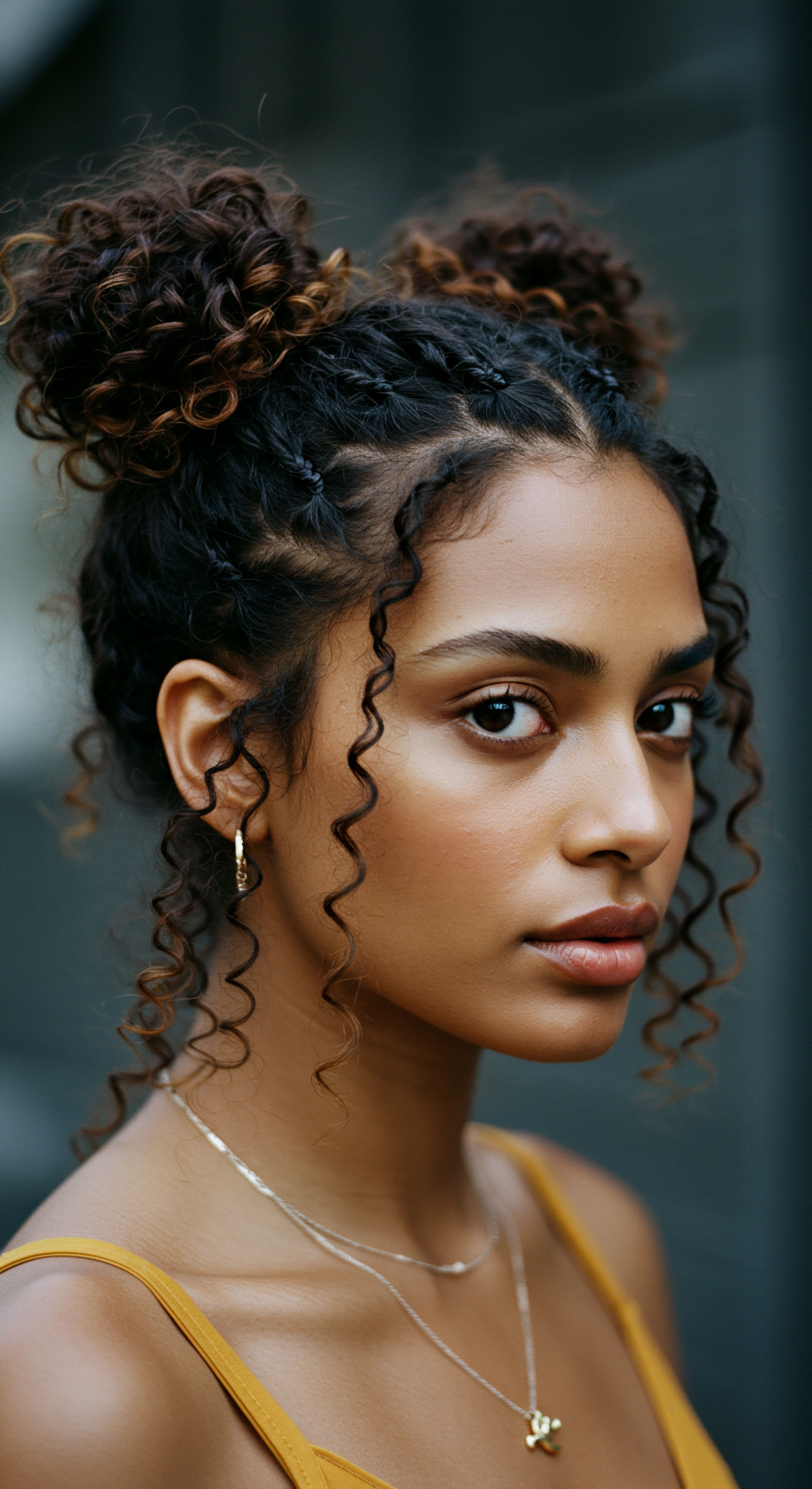
The Medical and Health Costs
Perhaps the most alarming and financially devastating hidden cost of chemical hair straightening lies in its documented health risks. Recent research has brought to light serious links between the long-term use of chemical hair relaxers and various hormone-related cancers, including uterine, ovarian, and breast cancers.
For instance, a study published in the Journal of the National Cancer Institute indicated that women who used hair relaxers at least four times a year more than doubled their risk of developing uterine cancer. Such diagnoses lead to immense medical expenditures. Treating cancer involves a range of costly interventions ❉
- Surgical Procedures ❉ For uterine cancer, this might include a hysterectomy, a major surgery with significant hospital and recovery costs.
- Chemotherapy and Radiation ❉ These treatments are notoriously expensive, involving multiple sessions and specialized medications.
- Medications and Follow-Up Care ❉ Long-term prescriptions, ongoing monitoring, and specialist consultations add to the continuous financial drain.
- Lost Wages and Reduced Earning Capacity ❉ Illness and treatment often prevent individuals from working, leading to substantial income loss and a potential reduction in future earning potential.
Beyond cancer, chemical straightening can cause direct scalp injuries, such as burns, irritation, and inflammation. These immediate injuries can necessitate medical attention, prescriptions for soothing creams or antibiotics, and potentially follow-up visits to a dermatologist, each adding to the medical bills.
Furthermore, chronic hair loss conditions, including various forms of alopecia, are also associated with frequent chemical treatments. The financial burden of managing alopecia is substantial. Patients often spend thousands of dollars annually on treatments, specialized products, and camouflaging agents like wigs and hairpieces, many of which are not covered by insurance.
One study revealed that individuals with alopecia incurred significant out-of-pocket expenses, with some spending over $500 Annually on over-the-counter hair growth products alone, and 45% reporting stress due to lack of insurance coverage for these costs. The average extra spending on daily essentials for alopecia patients was reported at EUR 1248 Per Person Annually in a European study.
The burgeoning number of lawsuits against hair relaxer manufacturers seeking compensation for these health damages underscores the severity of this particular financial cost. These legal actions, while aiming to provide redress, also highlight the profound economic disruption and personal suffering caused by such health issues.

The Costs of Transitioning Back to Natural Hair
Paradoxically, even the decision to cease straightening and return to one’s natural hair texture can incur financial costs. This “transitioning” period often involves purchasing a new set of products tailored to natural hair care, such as sulfate-free shampoos, deep conditioners, styling creams, and gels. Individuals may also invest in protective styles, like braids or twists, to manage the two different textures as the relaxed hair grows out, adding to salon expenses or product purchases for at-home styling. While this journey ultimately offers freedom from the continuous cycle of straightening, the initial investment in a new regimen is a real, albeit temporary, financial consideration.
The comprehensive financial picture of hair straightening is therefore a complex interplay of direct, ongoing maintenance costs, hidden expenditures related to time and societal pressure, and potentially catastrophic medical bills arising from long-term health consequences. It is a burden that often disproportionately affects those who feel the greatest societal pressure to conform to specific beauty standards.
- Relaxer Retouches ❉ Regular salon visits every 6-8 weeks for new growth treatment.
- Specialized Products ❉ Ongoing purchase of shampoos, conditioners, and treatments for chemically altered hair.
- Damage Control ❉ Expenses for professional repair treatments or medical consultations for scalp and hair health issues.

Reflection
The choices we make regarding our hair, particularly for those with textured strands, are seldom simple aesthetic preferences. They are often deeply resonant decisions, shaped by echoes of history, the whispers of cultural norms, and the loud demands of modern society. The financial aspects of hair straightening practices, when viewed through this expansive lens, reveal themselves not as mere transactions for beauty, but as a significant, often invisible, economic commitment that touches upon personal well-being, health, and even life opportunities.
We have seen how the desire for a straightened appearance, influenced by pervasive ideals, translates into a continuous flow of funds ❉ from the initial chemical service or tool purchase, through the steady acquisition of specialized products for maintenance, and into the potential, deeply distressing costs of addressing health complications or navigating workplace biases. This economic reality highlights a silent pressure, a quiet toll exacted from individuals who may feel compelled to alter their natural presentation to fit into prevailing societal frameworks.
The true value of our hair, however, extends far beyond its market price or the expense of its alteration. It lies in its connection to identity, its expression of self, and its capacity to bring comfort and joy. As we move forward, a deeper collective understanding of these intertwined costs – financial, personal, and societal – becomes a guiding light.
It allows for more informed decisions, fostering environments where hair choices can be made freely, unburdened by undue economic or social pressures. The invitation stands ❉ to celebrate every curl, coil, and wave, recognizing the profound worth in every strand, irrespective of its texture or its treatment.

References
- Byrd, A. & Tharps, L. (2014). Hair Story ❉ Untangling the Roots of Black Hair in America. St. Martin’s Griffin.
- Chang, C. J. et al. (2022). Hair Relaxer Use and Risk of Uterine Cancer in the Black Women’s Health Study. Environmental Health Perspectives.
- Gill, T. M. (2010). Beauty Shop Politics ❉ African American Women’s Activism in the Beauty Industry. University of Illinois Press.
- Llanos, A. A. M. McDonald, J. A. Teteh, D. K. & Bethea, T. N. (2022). Chemical Relaxers and Hair-Straightening Products ❉ Potential Targets for Hormone-Related Cancer Prevention and Control. JNCI ❉ Journal of the National Cancer Institute, 114(12), 1567–1569.
- Mesinkovska, N. A. et al. (2023). The Financial Burden of Alopecia ❉ A Survey Study. International Journal of Women’s Dermatology.
- Rosette, A. S. & Koval, C. Z. (2020). The Natural Hair Bias in Job Recruitment. Social Psychological and Personality Science.
- Weitz, R. (2004). Rapunzel’s Daughters ❉ What Women’s Hair Tells Us about Women’s Lives. Farrar, Straus and Giroux.
- Yetsenga, R. et al. (2021). The Economic and Social Costs of Body Dissatisfaction and Appearance-Based Discrimination in the United States. Deloitte Access Economics, in collaboration with the Dove Self-Esteem Project and STRIPED at the Harvard T.H. Chan School of Public Health.